Do Young People Not Also Deserve to Build Something New?
Reflections from a boat shed, a kitchen table, and a rotting world
Walking into my grandfather’s workshop as a young girl invoked both awe and anxiety. Blueprints covered makeshift plywood walls. Half-built and completed models sat on the benchtops. The air smelled of resin and possibility. The floor coated in fiberglass dust (forget to wear socks and you’d itch the 30minute drive home). Poppa was an inventor—a builder of boats, surfboards, light planes. You could look, but not touch. The pool table was the centrepiece, though we could only play when the bigger cousins were around.
My uncle inherited Poppa’s shaping skills, and my cousin after him—three generations of surfboard builders in a family of four generations of surfers. I find myself channelling Poppa a lot lately. Or at least I try to. I’m not very good at speaking to the dead.
Pinned above our kitchen table are the hand-drawn plans for a Wharram Narai Mk IV. Below them sits our half-built 1:10 scale model. Poppa appears in those lines often. I don’t know if he ever heard of Wharrams, or if he’d have had interest in Polynesian double canoes, but I imagine he’d be proud. Proud that his granddaughter—a woman—is picking up tools and building a boat from scratch.
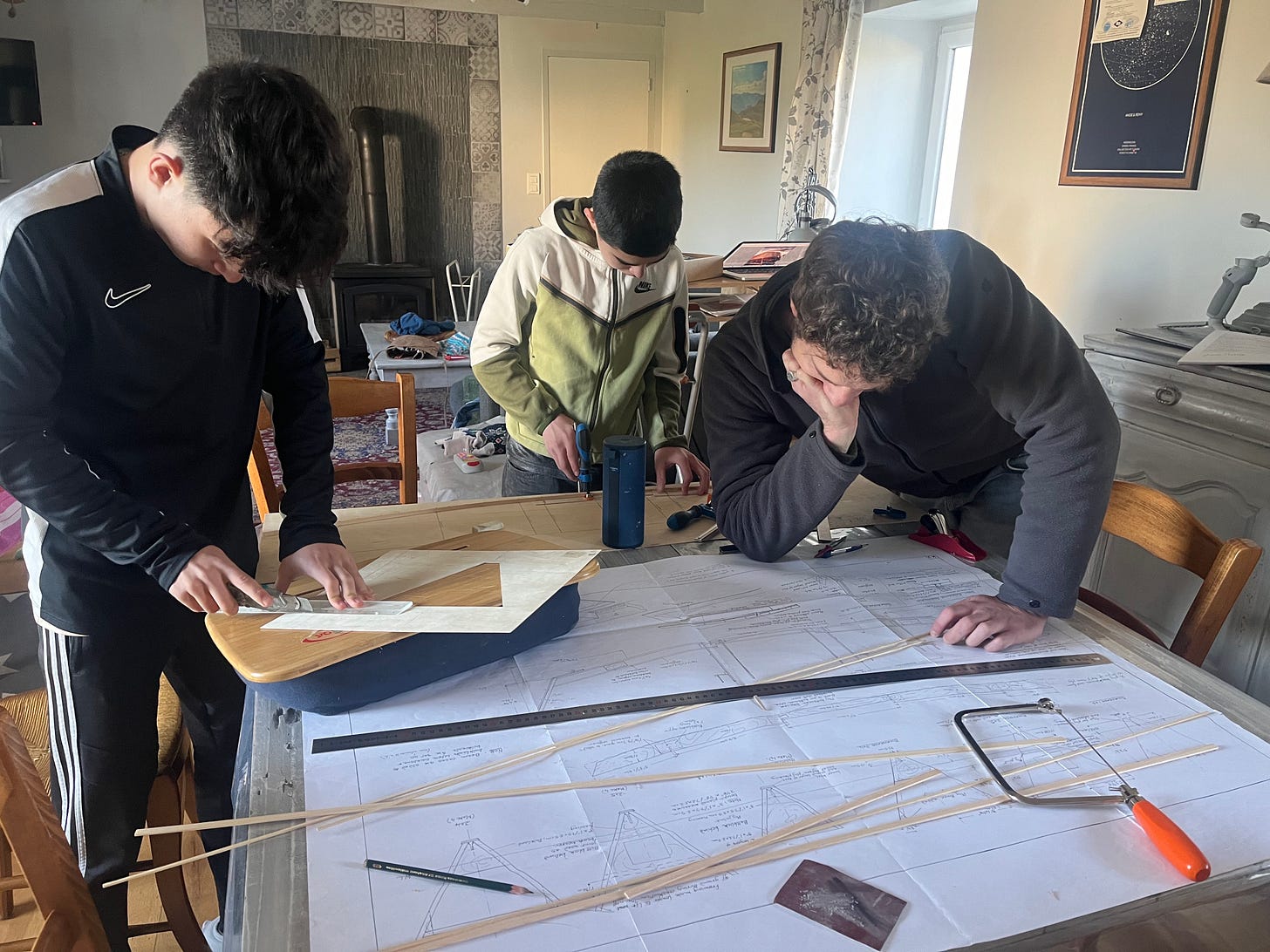
He might also be curious about the questions we’re asking: What becomes of this boat when it dies? How do we design with death in mind? And—here’s the one that stings the most—why are we made to feel guilty for building something new at all?
Poppa and his brothers died too young, all from lung diseases. Fiberglass and smoking—deadly mix. Like many of his generation, he started with balsa wood, then transitioned to GRP, experimenting with foams, resins, materials we now understand to be hazardous. I wonder what he’d make of our inquiry into the ecological and human cost of end-of-life GRP boats. I like to think he’d already be looking at biomaterials, less toxic resins, better ways to dispose of waste. Maybe that’s just my bias. But what I do feel—deep in my bones—is that Poppa would have been 100% behind me building this boat.

Like so many older boatbuilders we’ve spoken with over the past year—men and women alike—there’s a reverence for building from scratch. It’s an art. A dance between human hands, diverse materials, and a vision carried across generations. It’s not just a vessel—a boat is kin. Living kin, co-created with friends, family, strangers who come to help.
When I wrote about the “Death Plan”—an attempt to design this boat (and the association_ with its eventual decay in mind—responses were mixed. Some applauded the consideration. Others criticised the premise entirely.
“Wouldn’t it be more sustainable to salvage an old boat?” they asked.
It’s a fair question, but I wonder: do builders at Beneteau or Spirit Yachts get asked the same? Why is it only the next generation—the ones raising questions about sustainability—expected to inherit the waste, and nothing else?
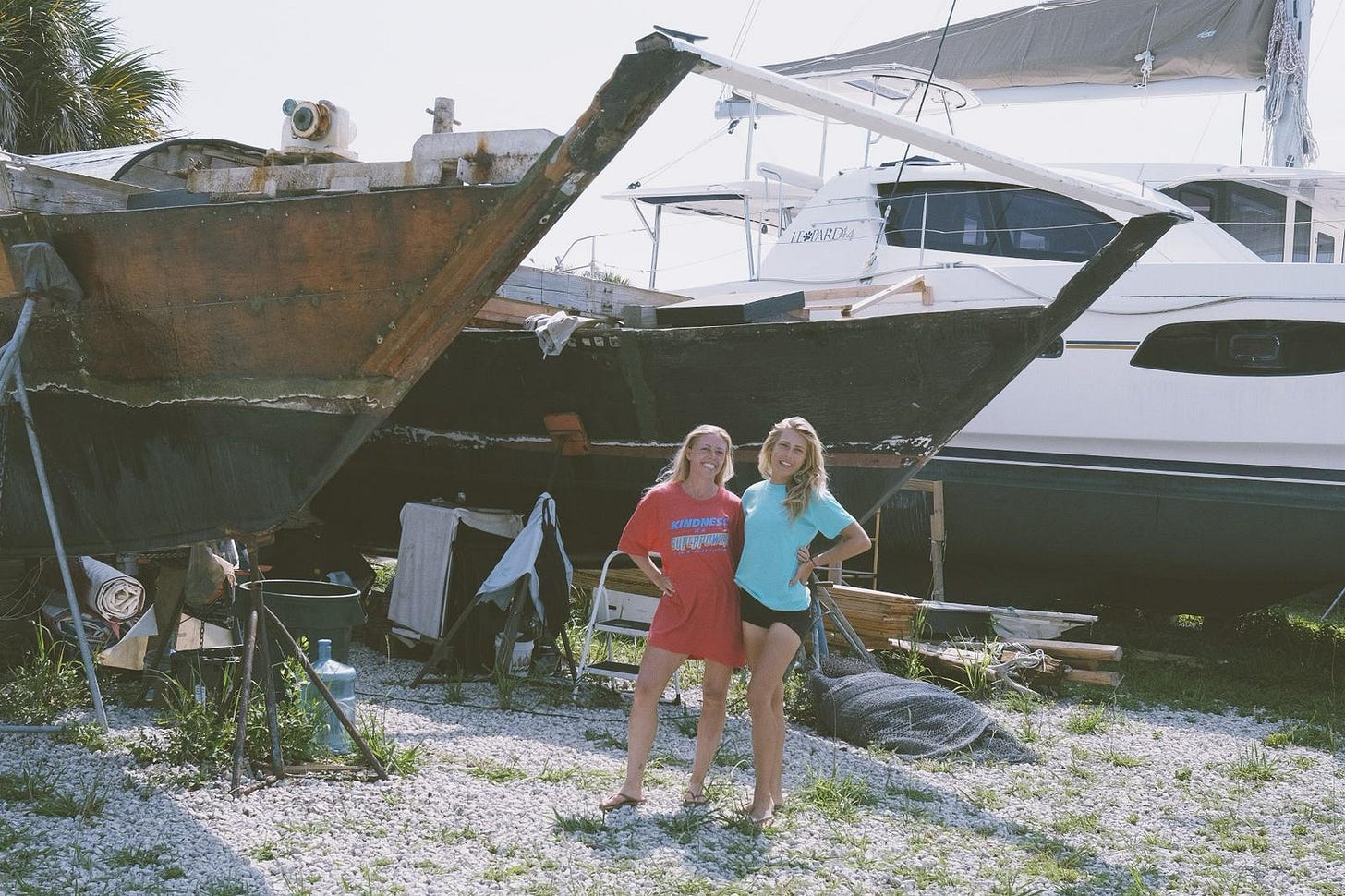
We began this journey looking for a secondhand boat. If you’ve been following along, you’ll know that. But the affordable options were disasters—crumbling GRP hulls with years of rot, restoration costs that would have drowned us. I grew up visiting Poppa’s workshop, my uncle’s surfboard factory. I know resin. I know what it does to lungs. I couldn’t see our kids hanging out around a yard for years inhaling dust from a half-dead plastic hull.
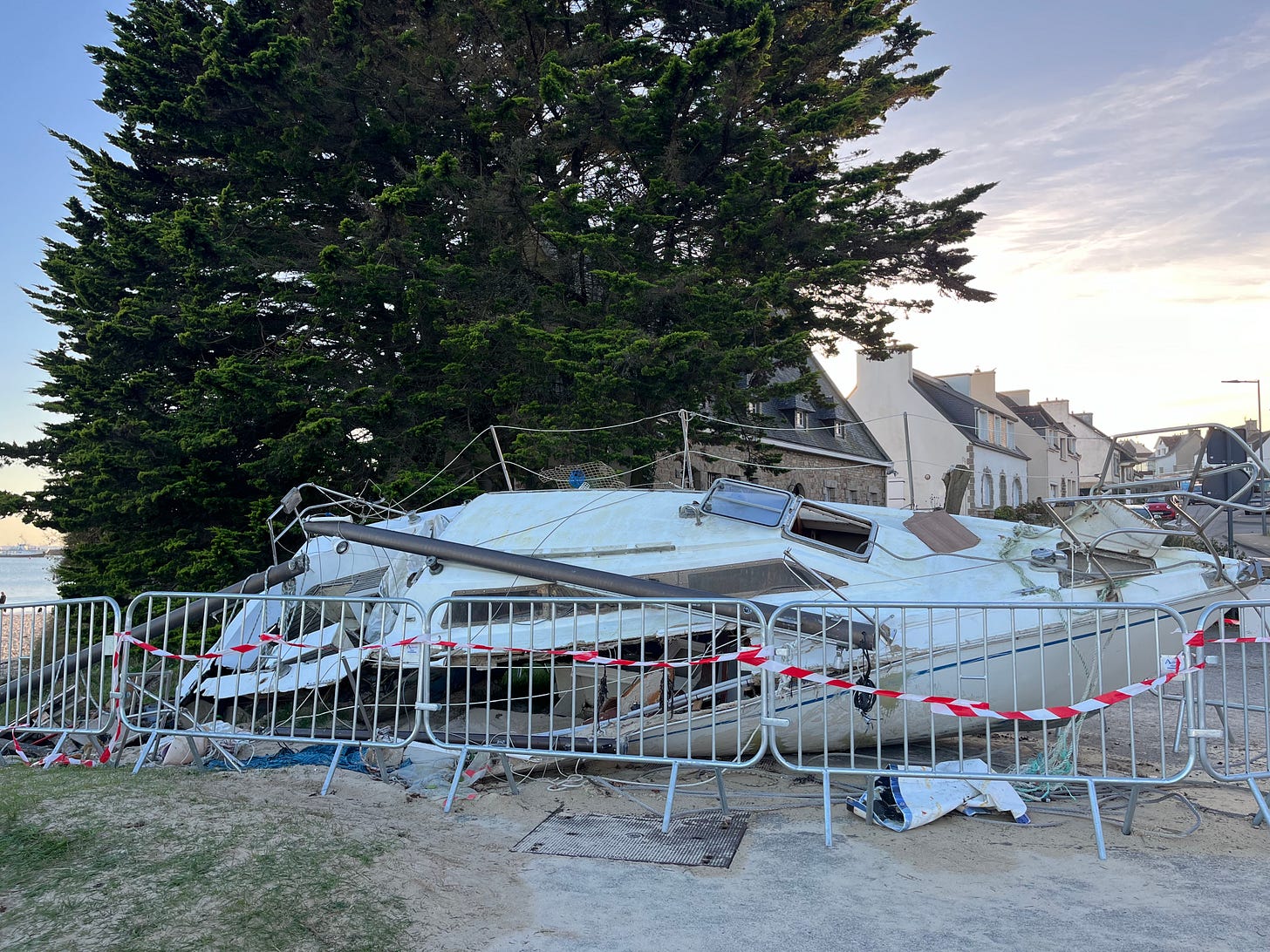
We looked at steel and other metals, but those secondhand boats were well beyond our budget. And then we discovered Wharrams.
For the same price—and perhaps even less time—we could build a brand new Narai Mk IV. We could be selective with materials. We could arguably produce less waste than a full-scale refit. (No hard data, but many conversations with other builders and refitters lean this way.) And we could have a vessel capable of carrying us, our kids, and our extended community for decades—enabling the Floating Stories Lab to undertake research and storytelling voyages that imagine and inspire better futures.
But this isn’t just a practical decision. It’s also a creative one. A relational one. A feminist one. A regenerative one. And it’s about access—who gets to build, to learn, to sail, to shape the future with their own hands.
Building this Wharram means co-creating a vessel with our children, our friends, our wider community. The plans—drawn by women like Hanneke Boon and Lesley Scrutton—are blueprints of art, design expertise, and care. They descend from Polynesian design philosophies, filtered through decades of experimentation and cultural exchange. They are spirals, not straight lines.
And oh, what a thought—to launch this boat, built by so many hands, and let the wind and tide carry her, with us, our children, and a welcome crew of artists, creatives, and curious young minds aboard, slowly across oceans.
Just the other day, Remy and I visited the future workspace. The space was still filled with timber scraps from other projects, CapSo hadn’t yet cleared it out for us, but I could already see it: those first sheets of Maritime Pine from southwest France laid across the concrete, the first lines drawn. My stomach flipped. So far I’ve only co-built with Remy and the kids at 1:10 scale. But thousands of builders—mostly men, yes, but increasingly women—have made those first lines drawings and cuts before me.
Did the Polynesians draw lines like these? What did their workspaces look like? How many people came together to build a canoe of this size? Did women and children join in the build?
Poppa steps into the imagined boat shed. He looks around, impressed.
“400 square meters? Spoilt you are,” he might say.
And what of the youth involved in this build—mine included? What futures might this awaken in them? No screens. No scrolling. Just hands full of ply, measuring, cutting, learning alongside others. Don’t they have a right to turn blueprints into art, too?
We’ve inherited a world overflowing with waste. Beaches strewn with plastic. Marinas littered with abandoned, rotting boats. Scientists have found microplastics in our bloodstreams, in breast milk—even in the placentas feeding unborn babies. This is the mess we were born into—and yet somehow, we’re expected not just to live with it, but to clean it up. And only clean it up.
To think regeneratively is to hold life and death in the same breath. To know that all things decay. Even boats. Not all death leads to renewal—some materials linger, leach, and harm. But death is still part of the cycle. And so is birth. To build something new with care, while already imagining its end, might be less of a contradiction and more, I don’t know, responsibility? Isn’t it okay to create? Can the next generation also strive to begin again?
Yes, the end-of-life boat crisis is real. Few policies exist to regulate responsible disposal. Manufacturers aren’t held to account. Insurance companies wash their hands. In places like Small Island Developing States, discarded boats—crushed by storms or abandoned by foreign owners or charter companies—are left behind like sea-borne tombstones.
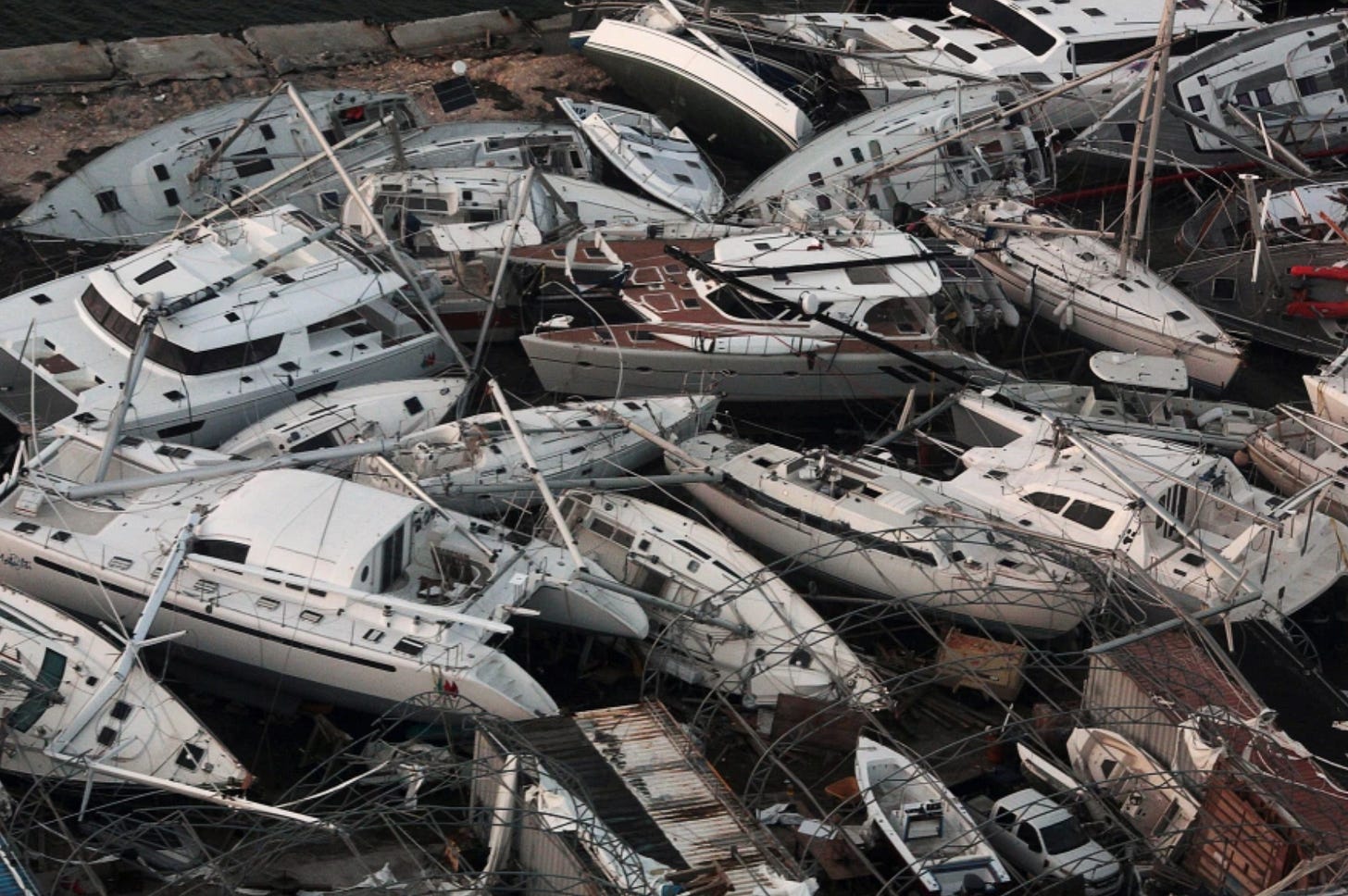
Only in France (to my knowledge) is there a boat tax that subsidises disposal. But even that gets passed on to the consumer, who might not know—or care—about what to do to co-write their boat’s death story when they’re done with it. (APER is leading the way with responsible boat disposal, but is a long way from meeting targets, and dead boats remain a huge problem here in France).
Yes, Wharrams are part of this too. Some lie rotting around the world, abandoned like any other boat. And yes, some people—like my friend Kiana—bring them back to life with extraordinary hard work and ongoing care. But not everyone can. And not all boats should be revived. Some are simply… at the end.
Death catches us all.
Right now, I have more questions than answers. Maybe you’ll critique me for that, too.
But I do think that making something new with our hands, together, is sacred. And in that space—of sawdust, of silence, of sweat and spirit—there must be room for knowledge to grow.
Likely, this boat will never be fully sustainable (what does sustainability even mean anymore?). But maybe, just maybe, the act of building it will grow something far more valuable than the vessel itself.
A culture of questioning.
A practice of kinship, regenerative thinking, and custodial care.
A community of creators who dare to dream otherwise.
—Angie
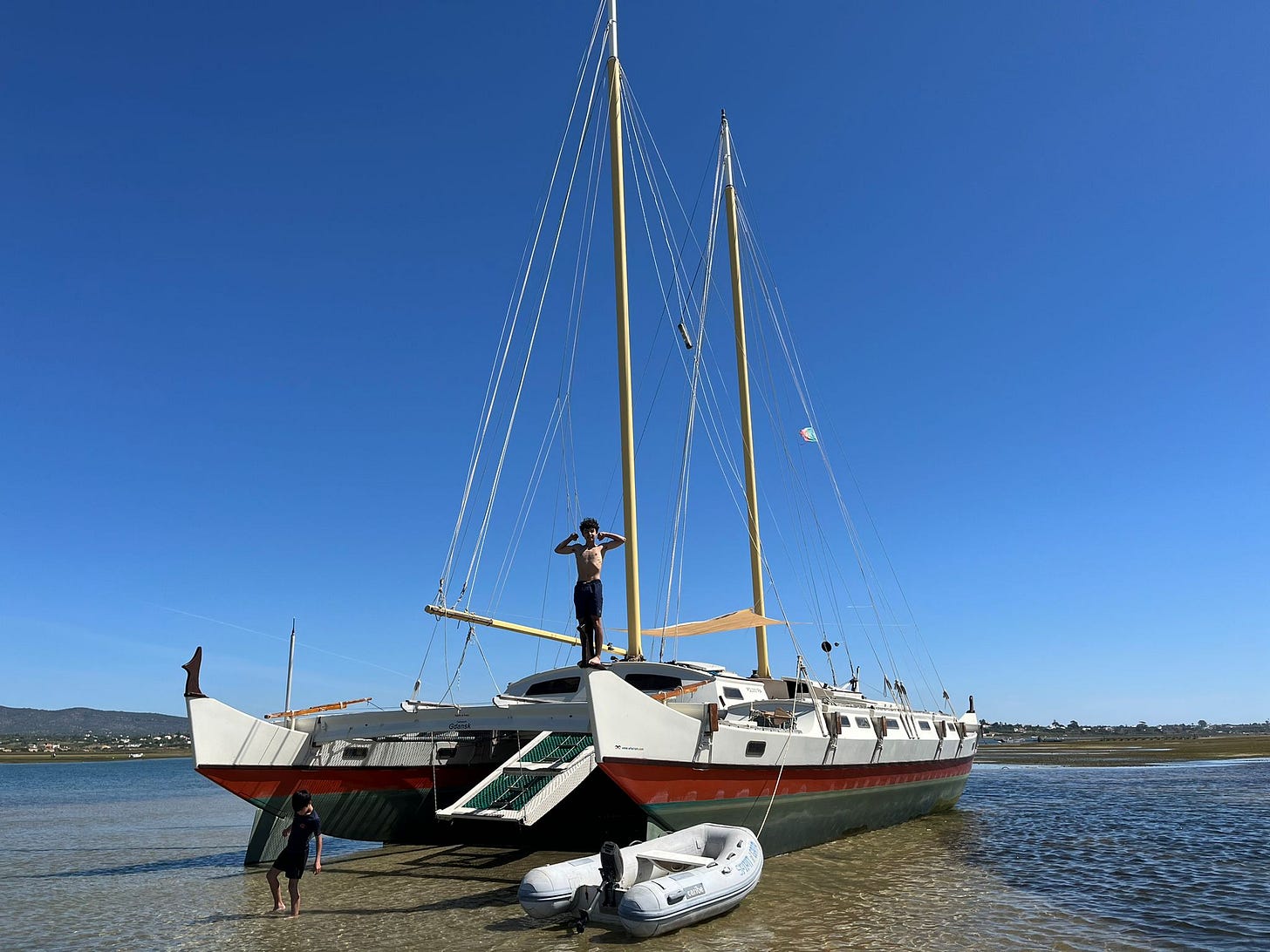




As an American “old boatbuilder” and California surfer with Polynesian connections now Living in Dordogne France, I really appreciate your story and the inspiration for your project. I hope to visit someday and possibly lend a hand. Teryl www.Virsoleil.org
A wooden vessel is such a unique experience in this day and time, especially. Kudos to you.
I own a 1934 18m Motorsailer ketch on which we are currently replacing the bow. Check my work for photos and details if you have a moment! Congratulations and best of luck; these project tend to take more time, energy, patience and money than originally anticipated.... Cheers ~J